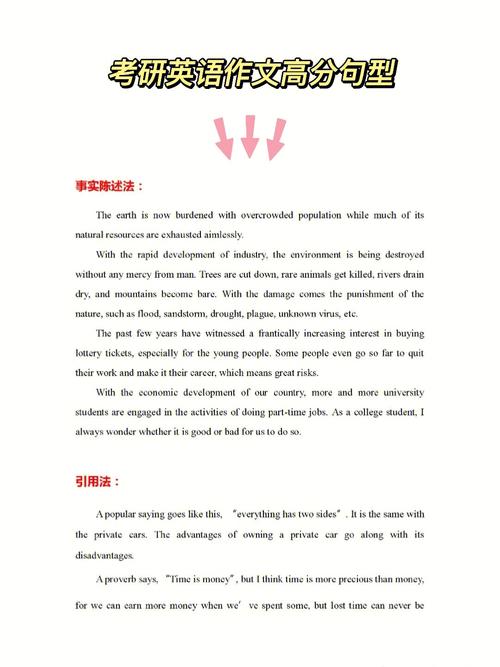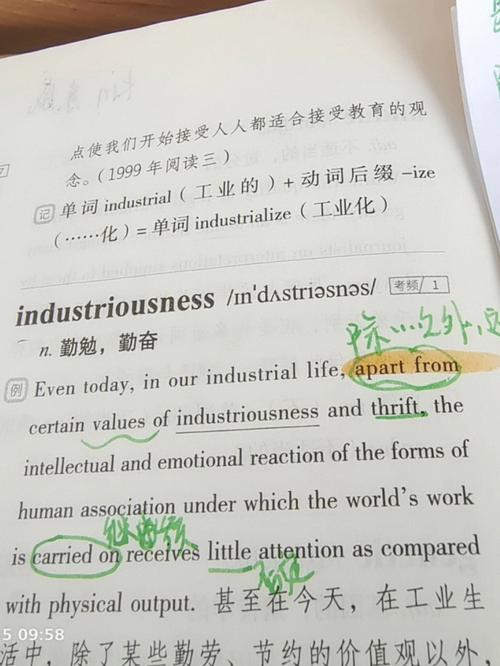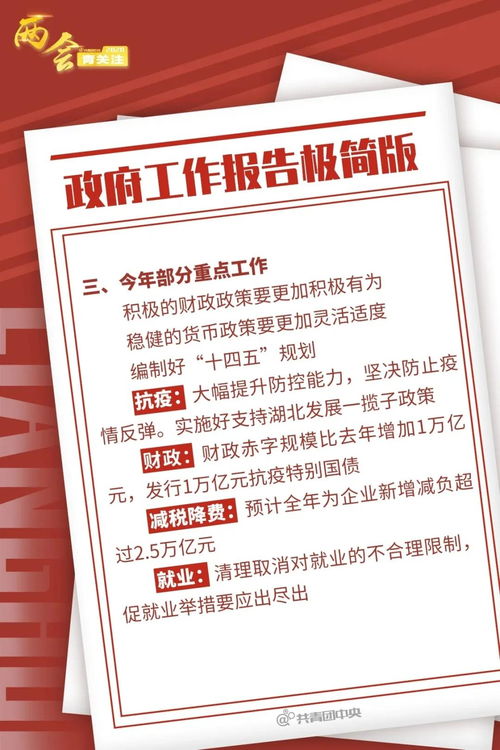考研英语大作文万能句子
Title: Mastering Key Sentence Structures for the Graduate English Exam

In the realm of the English language proficiency test for graduate studies, mastering key sentence structures is paramount for success. This essay delves into essential sentence structures to equip you with the necessary tools to excel in the examination.
1.
Simple Sentences
: The foundation of effective communication, simple sentences contain a single independent clause. For instance, "She studies diligently."2.
Compound Sentences
: These consist of two or more independent clauses joined by coordinating conjunctions (and, but, or), conjunctive adverbs (however, therefore), or semicolons. Example: "She studies diligently, but he prefers to procrastinate."3.
Complex Sentences
: Comprising an independent clause and one or more dependent clauses, complex sentences enhance writing complexity. For example, "Although she studies diligently, she still struggles with the subject."4.
CompoundComplex Sentences
: These sentences merge the features of compound and complex sentences, providing a high level of detail and connectivity. Example: "She studies diligently, but when the exam arrives, she feels unprepared because she procrastinated."5.
Parallel Structure
: Employed for coherence and balance, parallel structure involves using the same grammatical form for similar elements in a sentence. For instance, "She enjoys studying, reading, and writing."6.
Inversion
: By reversing the usual order of words, inversion adds emphasis or creates a poetic effect. Example: "Not only did she study diligently, but she also excelled in her exams."7.
Conditional Sentences
: These express hypothetical situations and their outcomes, with different types denoting varying degrees of likelihood. Example: "If she studies diligently, she will excel in her exams."8.
Relative Clauses
: These clauses provide additional information about a noun in the sentence and are introduced by relative pronouns (who, whom, whose, which, that). Example: "The student, who studies diligently, received the highest grade."9.
Passive Voice
: While less common in academic writing, passive voice can be used to shift focus or emphasize the receiver of an action. Example: "The exam was passed by the diligent student."10.
Cleft Sentences
: These sentences allow for emphasis on a particular part of the sentence, often through the use of "it" constructions. Example: "It was her diligent studying that led to her success."In preparing for the English proficiency test, it's crucial to not only understand these sentence structures but also to practice incorporating them into your writing. Familiarity and proficiency with these structures will undoubtedly enhance your ability to express ideas clearly and effectively, ultimately leading to success in the examination.












评论